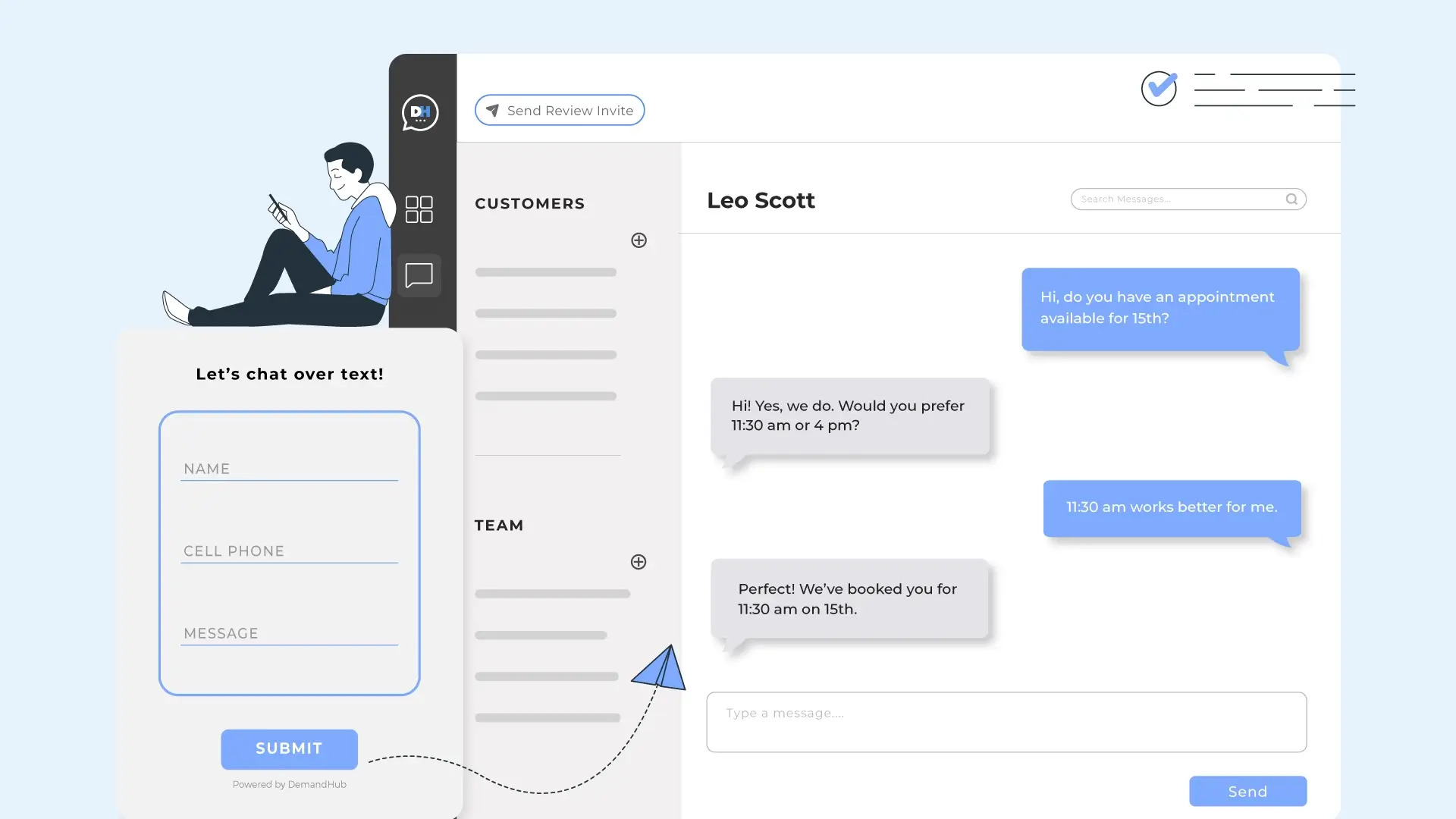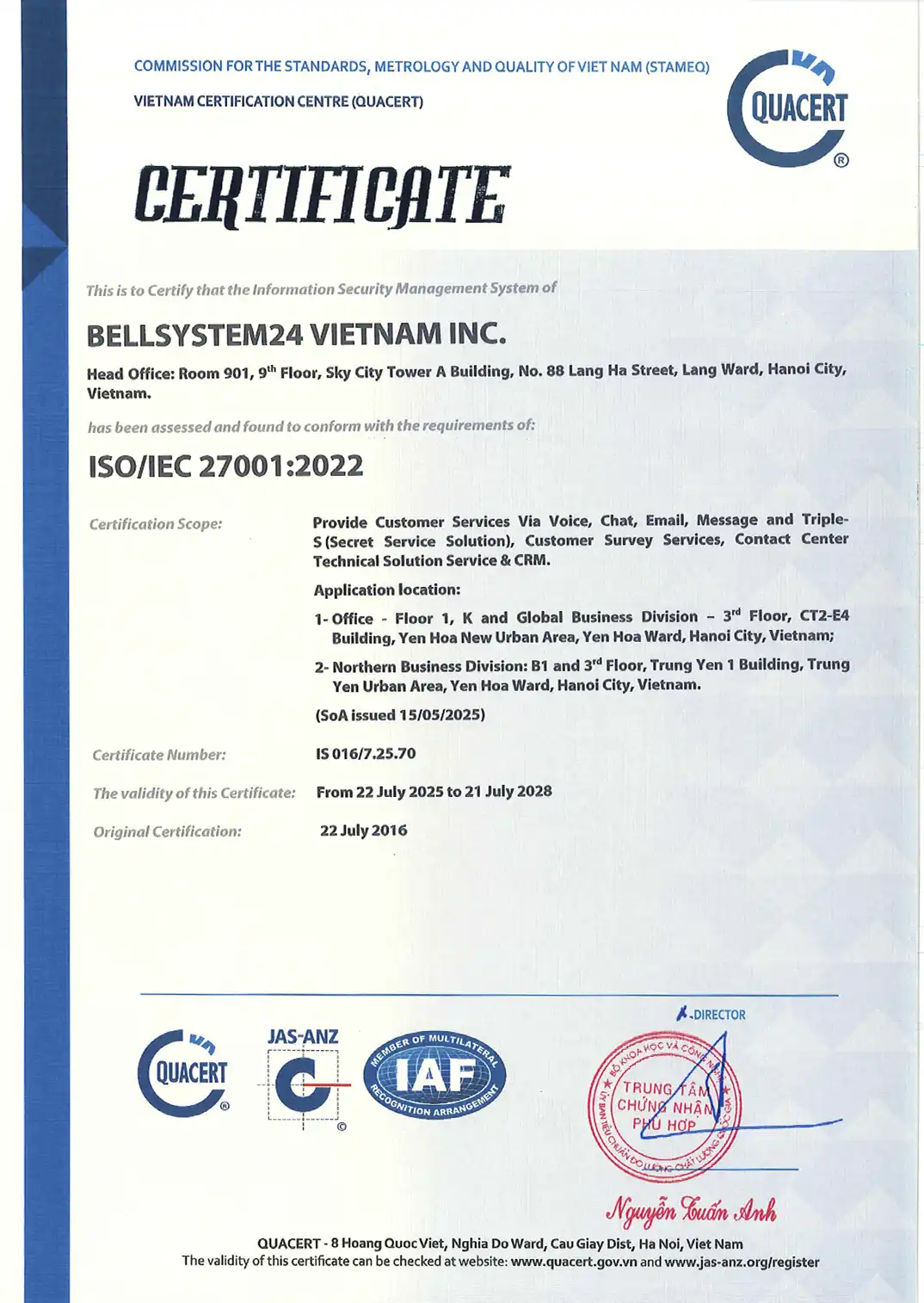Covid-19 has had a significant impact on Contact Center operations with a notable increase in difficult calls. In addition to striving to deliver a perfect customer care experience, businesses also face many internal challenges such as setting up remote working tools, adapting to technological developments, and ensuring sales revenue does not stagnate too much in a difficult financial climate.
Good contact center software alone is not enough to help businesses overcome the post-COVID-19 crisis. Unless you become a pioneer, it will be difficult to keep up with all the changes in this field.
Join us in exploring the trends predicted to significantly impact Contact Center services in 2022. Gain a deep understanding of upcoming trends to help businesses develop appropriate strategies, delivering the best, most seamless customer experience.
Customer expectations
92% Managers understand the importance of customer service for business development. Therefore, many choose customer service as a priority in their development strategy, while a few businesses turn customer experience into a competitive advantage.
It is evident that customer expectations are constantly changing over time. Therefore, despite being willing to spend huge sums of money to acquire tools that enhance the customer experience, many businesses still find themselves struggling.
In addition to the increasing difficulty of making calls, businesses also face numerous problems related to network connections or supervisors being unable to intervene immediately when allowing employees to work from home.

Artificial intelligence (AI) technology continues to be widely applied.
The disruptive power of technology has contributed to nearly every change in the Contact Center industry. In addition to accelerating processing speeds, the advent of artificial intelligence (AI) has also brought many unexpected benefits.
Optimize processing time
Instead of taking a long time to process, complex call routing is now encoded in a short period of time. Supports quickly and accurately directing users to the most appropriate operator.
Improve Agent Performance
The application of AI has created a new breakthrough in optimizing agent performance, especially during the pandemic. In addition to providing multi-channel customer care and outreach, AI also supports immediate customer responses based on time-encoded information, creating simple, meaningful response templates.
For example: When a customer calls to make a complaint, the predictive power of AI will receive and provide several possible responses. The call center agent only needs to select the most appropriate response or can completely ignore it if desired.

Delivering a seamless customer experience
When customers interact with the business, AI will instantly compile all user information. This allows call center agents to quickly and accurately interact with customers across all channels.
It is clear that AI will play a crucial role in the future and is expected to bring about many breakthroughs in the digitization of Contact Center operations.
Agent productivity analysis tools
Previously, agent productivity and performance were often analyzed based on the acumen and skills of managers. However, in the digital age, especially with the impact of the Covid-19 pandemic, call center management models have undergone significant changes to adapt and improve customer service, optimize staffing, and ensure operational productivity.
Omnichannel Communication Solution
Omnichannel Communication is no longer a new trend, but it remains an important solution that helps businesses differentiate themselves from their competitors.
A study also shows that 9 out of 10 customers rate multichannel services positively. Creating consistent and seamless experiences makes it easier to navigate customer touchpoints and collect and manage detailed information.
In the future, many call centers will adopt multi-channel call centers and make breakthroughs, so your business should also adapt and change before it's too late.

Self-service technology
A study shows that 91% customers prefer to use self-service features to find available solutions quickly, without having to wait too long or deal with complicated procedures. This trend also paves the way for the long-term development of self-service technology in the future for consumers in general.
Some self-service technologies widely used in call centers include IVR, chatbots, virtual assistants, etc. These methods will continue to receive support from most customers and become increasingly widespread. As a Call Center, businesses need to improve existing tools, add frequently asked questions, instructional videos, and troubleshooting guides to provide maximum support to customers.

Digital transformation
Today, customers often seek quality and long-term relationships with brands. It is precisely their complex and demanding needs that have created a wave of "major overhaul" for most businesses.
To deliver a consistent and comprehensive experience, call centers need to find seamless coordination between different departments. Therefore, the application of digital transformation such as unified multichannel technology or machine-to-machine communication through IoT plays an important role in customer service and maintaining customer relationships.
Businesses that pioneer digital transformation will seize future opportunities and take wise steps to prepare for unexpected changes that may occur in the near future.
IVR
Automated customer feedback through IVR is one of the automation trends that has been developed for a long time. Despite this, it remains a hot topic that will continue to evolve in the near future.
The impact of Covid-19 has proven that IVR plays a significant role in serving and responding to customers as quickly as possible in the event of overload. More than 42% businesses and organizations have used enhanced IVR during the difficult period of Covid-19 and used it as a way to keep in touch with customers even while temporarily suspending operations.

In 2022, the emergence of AI has revitalized IVR. This combination has given rise to conversational IVR systems that play many important roles in modern call centers. The use of voice recognition in IVR allows calls to be routed to the right agent with the relevant expertise, providing the fastest and most accurate problem resolution. Additionally, IVR systems collect information related to customer data and interaction history, enabling a highly personalized experience.
Cloud Call Center
The development of Cloud Call Centers brings stability to remote call center operations. This technology allows businesses to interact with customers remotely with ease, especially in the context of social distancing and the impacts caused by Covid-19.
The implementation of a Cloud Call Center supports the consolidation of customer management and interaction across multiple channels on a single platform, enabling businesses to flexibly perform all inbound and outbound tasks of a professional call center.
In particular, the implementation of Cloud Call Centers provides flexibility to better serve and interact with customers. Therefore, we predict that this technology trend will continue to become the operating method of most call centers in the near future.

Competition in Call Center service deployment is becoming increasingly fierce, especially after the impact of Covid-19. Suggestions on Contact Center technology trends in the coming year 2022 will help businesses find the right direction, make necessary changes to keep up with trends, minimize costs, and increase revenue.







